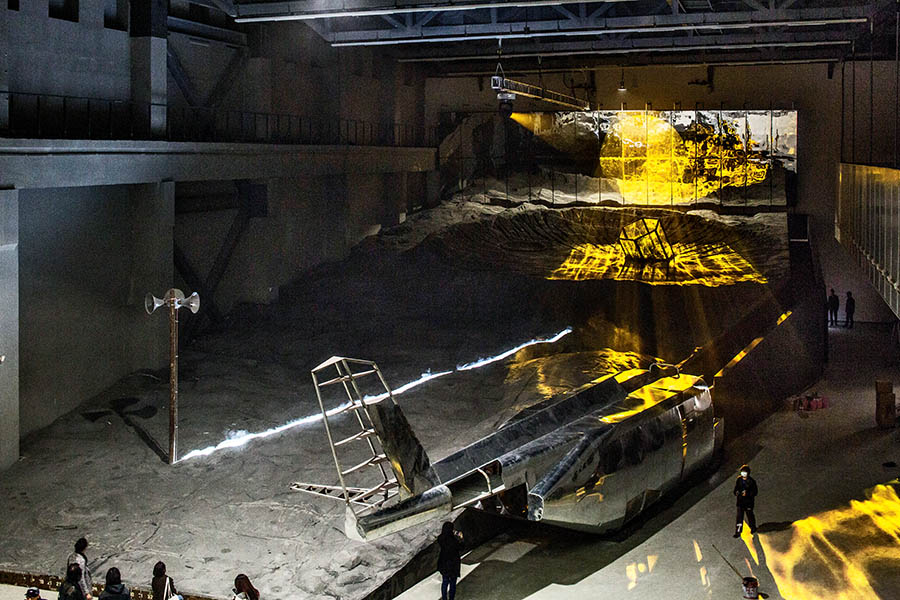11th Shanghai Biennale: Never Stop Thinking

On November 11, 2016, the 11th Shanghai Biennale kicked off at Shanghai-based art museum Power Station of Art (PSA). A total of 92 artists and artist groups from 40 countries brought work to town and displayed it in PSA’s three floors of cavernous exhibition halls, next-door garage and signature massive funnel.
Launched in 1996, the Shanghai Biennale was the first international biennale dedicated to contemporary art on the Chinese mainland. The 2016 biennale, masterminded by the Raqs Media Collective from India, is themed “Why Not Ask Again: Arguments, Counter-arguments and Stories.” Monica Narula, a member of the Raqs Media Collective, revealed that the reason they chose the phrase “why not ask again” is they want people to perpetually ponder certain questions. Narula and her team believe that even if a question already has an answer, it still inspires other questions and should attract more people to pay attention to it, re-explain it or even turn it upside down.



This year’s biennale features four intersecting orbital paths: “Terminals,” “Infra-Curatorial Platform,” “Theory Opera” and “51 Personae.” “‘Terminals’ are places of departure, arrival, and transfer,” explains show curator of “Infra-Curatorial Platform” Liu Tian. “They are the connecting hubs of events. ‘Infra-Curatorial Platform’ invited seven young curators from different parts of the world to each develop a sub-exhibition. ‘Theory Opera’ presents performance activities throughout the biennale, and the project ‘51 Personae’ aims to find 51 actions and ‘figures’ to celebrate and explore the city of Shanghai. These efforts are designed to make the biennale less conventional and more flexible.”
PSA’s second floor houses the work The Great Chain of Being-Planet Trilogy, a massive installation produced by students from the School of Intermedia Art at the China Academy of Art. Consuming the nearly 2,000-square-meter space, the installation is the most magnificent piece at this biennale. Divided into the three parts, namely “Infinite Perspective,” “End of Time,” and “Towards Darkness,” the piece invites spectators to follow a winding route through 40 “sceneries” such as a glasshouse and futuristic jungle composed of fluorescent tubes. At the same time, spectators are flanked by copper funnels broadcasting sounds and voices from the 1960s. The narrow walkway leads through a succession of tableaux. In such a closed environment, people can only see the sparkling “sceneries” in the darkness, and can never imagine what awaits around the next corner. The sci-fi flavored piece vividly explores the question asked by Mou Sen, creator of the work and a forerunner of experimental theater in China: What on earth is existence?


The biennale chose “Arguments, Counter-arguments, and Stories” as its subheading for two reasons: On the one hand, it is the title of a film directed by Ritwik Ghatak, one of the most revered figures in the Indian film industry in the 20th Century. On the other hand, Raqs Media Collective took inspiration from The Three-Body Problem, a renowned Chinese science fiction by Hugo Award winner Liu Cixin. The Raqs Media Collective viewed “arguments, counter-arguments, and stories” as a threebody problem born of physics and focusing on laws of physics such as gravity.
Asking questions and re-thinking accepted ideas are common pursuits of curators and artists alike. As the Raqs Media Collective expressed in their work notes, every biennale will leave its own mark on time. Every biennale is beautiful because it captures a city’s imagination for months and then disappears until the next one.
The 11th Shanghai Biennale runs until March 12, 2017.
The author works for Sanlian Lifeweek.